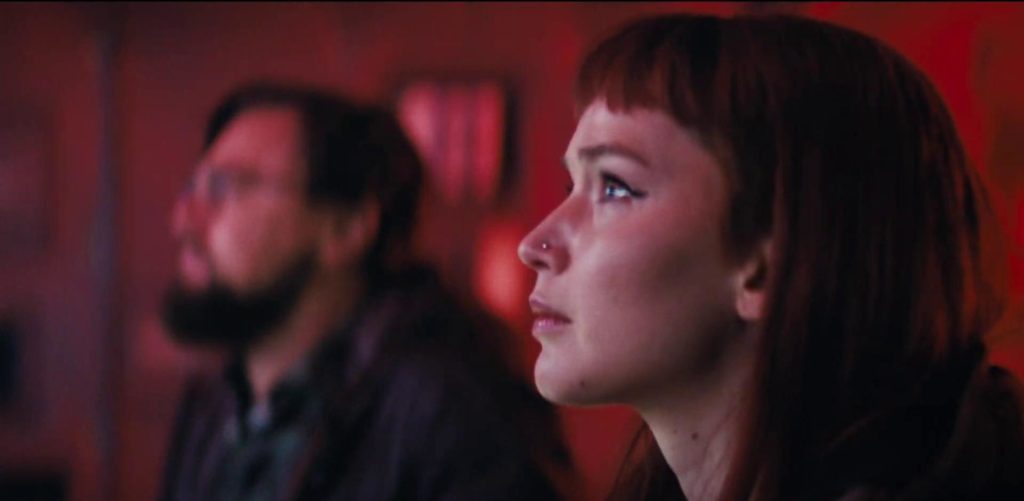By Ken Miyamoto from ScreenCraft · February 1, 2023

When it comes to learning about the many dynamics of screenwriting, including the key aspect of tone in writing, screenwriters are tasked with reading about the endless go-to elements of screenplays. Some of these elements include structure, conflict, genre, theme, and characterization. Books, workshops, classes, tutorials, and panels focus solely on these vital elements of screenwriting — and rightfully so. However, very little attention is paid to perhaps the most essential ingredient found within all screenplays and their eventual adaptations into movies — tone.
In cinema, the definition of tone is a mystery to most — lost in translation. People debate the difference between tone and mood in relation to the cause-and-effect elements of a screenplay. The atmosphere also plays a role in this discussion.
Let’s simplify the definition of cinematic tone, explain why tone is important, and learn how the tone of a screenplay and movie affects its cause and effect.

Don’t Look Up (2021)
Cinematic tone is best described as the presented attitude or approach the screenwriter takes toward the concept, subject, character interaction, and narrative of the screenplay.
For example, imagine the core movie concept:
An asteroid is headed toward Earth, threatening to destroy human civilization as we know it.
A movie idea can be promising, but it only truly becomes a movie when the tone is established. This is done to give the audience an idea of what kind of film they can expect. This process starts with the screenplay. With the core concept, we know it’s an apocalyptic movie, for example. That’s a sub-genre, not tone. We also know that we’ll have characters reacting to the global threat, likely struggling to survive by way of potential prevention before the event or through survival struggles after the impending impact. Those are story and plot elements — not tone.
The screenwriter for this concept would need to ascertain their approach to the concept, subject, character interactions, and narrative. Are we going with a lighthearted, action-driven tone (with added elements of comedy)? If so, we have Michael Bay’s Armageddon. Are we going with a more dramatic, tragic tone? If so, we have Mimi Leder’s Deep Impact. Conversely, are we going to apply a more satirical comedic tone? If so, we have Adam McKay’s Don’t Look Up.
Read More: The Dark Humor of Adam McKay Movies
Do you, the screenwriter, intend to make the audience laugh, cheer, or cry? You can certainly provide all of those intentions throughout your screenplay, but there needs to be one predominant intention. The tone of the screenplay should be the main focus of the material, encompassing the three essential elements of every screenplay and scene/sequence: location, scene description, and dialogue. These elements play a crucial role in shaping the tone and overall feel of the story.
Setting matters. In our asteroid concept, Armageddon’s location is primarily in space, with a rather loose form of science attached to the space travels the characters take on. It’s more lighthearted action than science-based space travel.
In Deep Impact, part of the story takes place in space with a similar mission of preventing the impact of the asteroid by using explosives. However, Deep Impact treats the science of space travel by way of more grounded science, presented in a more dramatic way. Most of the character dynamics are present in real-world locations on Earth, following the dramatic repercussions of the impending doom.
In Don’t Look Up, the settings of the story are set primarily within government buildings and news stations, showcasing the satire of those environments amidst the politics of how different real-life caricatures would react to such a situation.
Screenwriters control the tone of the movie by presenting particular location choices that warrant a particular feel for the audience.
The way a screenwriter crafts scene descriptions in their writing, including the use of tone in writing, will determine the intended tone for the eventual film and inform the filmmakers of the desired mood for the movie. Here are some examples:
The tone of scene description is crucial in setting the tone for the entire film, and it helps the filmmakers understand the director’s vision for the movie. It can determine the overall mood, atmosphere, and style of the film. A well-written scene description can also convey the intended emotion and energy of each scene, making it easier for the filmmakers to bring the script to life on the big screen. Ultimately, the tone of the scene description plays a vital role in shaping the audience’s experience and engagement with the story.

Bruce Almighty (2001)
How the characters interact, talk to each other, and react to the conflicts thrown at them will dictate the movie’s tone within the dialogue.
While all genres can employ both drama and humor within the dialogue, again, it’s all about what is most predominant.
For example, Bruce Almighty is packed full of hilarious dialogue and hijinks. However, the protagonist also experiences dramatic arcs throughout the story. Despite those dramatic elements, it’s predominantly a comedy. Whereas a film like Steven Spielberg’s The Fabelmans is a drama despite many moments of comedic humor and ensuing laughs.
Read More: Close Encounters with Greatness: Steven Spielberg’s Lifetime of Achievements
Dialogue plays a big part in the chosen tone of a screenplay — and it will also inform the reader and eventual audience as to what type of characters you are presenting.
The characters you have in mind may possess different personalities and characteristics, affecting their tone in the dialogue. But how can you describe their tone?
Some may be described as cheerful and joyful, exuding positivity and lightheartedness. Others may possess a dry and sarcastic wit, with a tendency to use humor as a defense mechanism. Some may be assertive and confident, while others may be more passive and melancholic. Characters can struggle with inner demons and are haunted by their past, while others constantly reminisce about nostalgic memories. Some are optimistic, always seeing the glass as half full, while others are pessimistic, always anticipating the worst.
Some may be inspirational, serving as sources of motivation and inspiration to those around them, while others may be manipulative and persuasive, using their charisma to control those around them. Additionally, there are those who are uneasy and regretful, constantly grappling with feelings of guilt or uncertainty. Lastly, there may be characters who possess a reverent demeanor, always showing reverence and respect for their beliefs and values. It really just depends on what your vision is for the tone of the dialogue.

The answers to that question will stem from your choice of tone their dialogue carries. Thus, the predominant tone will help dictate what the overall tone of your script may be.
The cause-and-effect between tone, mode, and atmosphere creates the best cinematic experience for the audience. Months and years before that experience, the screenwriter needs to inform the script reader (producers, executives, managers, agents, directors, actors, etc.) as well. The chosen predominant tone will set people’s expectations for the reading of your script or the viewing of your movie. Most production companies produce a particular genre (with exceptions), and tone usually dictates the type of genre.
Audiences choose movies based on the type of mood and atmosphere they want to experience.
Tone in writing is crucial when it comes to scripts as it determines the production company’s interest and the audience’s reaction. It creates the mood and atmosphere of the story, plot, and characters. An inconsistent or unclear tone confuses the reader and audience, decreasing the likelihood of producing the screenplay. To be successful, a screenplay must have a clear and predominant tone throughout. This showcases the writer’s intent and genre. In conclusion, tone sets the foundation for a successful screenplay and is the starting point for a screenwriter.
—
Ken Miyamoto has worked in the film industry for nearly two decades, most notably as a studio liaison for Sony Studios and then as a script reader and story analyst for Sony Pictures.
He has many studio meetings under his belt as a produced screenwriter, meeting with the likes of Sony, Dreamworks, Universal, Disney, and Warner Brothers, as well as many production and management companies. He has had a previous development deal with Lionsgate, as well as multiple writing assignments, including the produced miniseries Blackout, starring Anne Heche, Sean Patrick Flanery, Billy Zane, James Brolin, Haylie Duff, Brian Bloom, Eric La Salle, and Bruce Boxleitner, the feature thriller Hunter’s Creed, and many Lifetime thrillers.
Follow Ken on Twitter @KenMovies